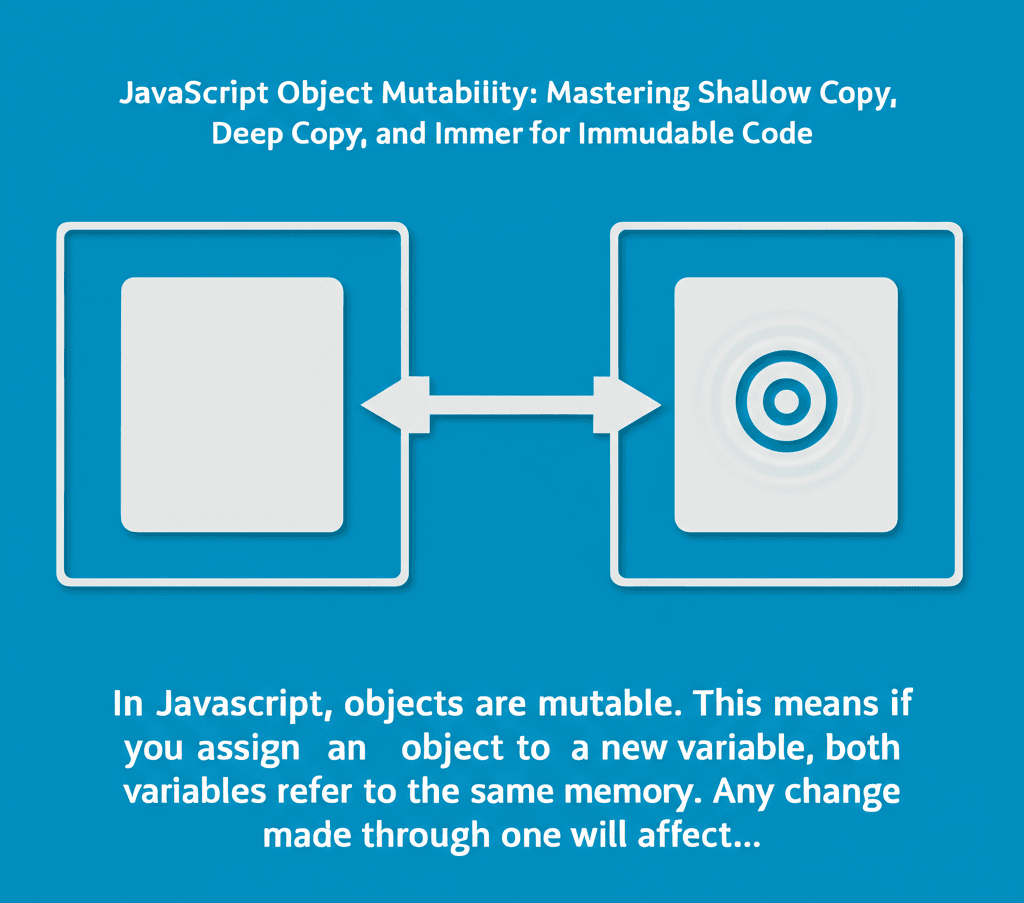JavaScript, like many object-oriented languages, relies on reference types for handling complex data structures. One fundamental concept that developers must understand is object mutability, which refers to the ability to change the state or properties of an object after its creation. In JavaScript, objects are mutable by default, meaning that when you assign an object to a variable, you’re actually copying the reference to the object’s memory location, not the object itself. This can lead to unintended side effects if multiple variables or functions interact with the same object.
For instance, consider a scenario where you create an object representing a person’s details and assign it to another variable. If you then modify the second variable’s object, the original object might also change due to shared references. This can cause bugs and make code harder to debug, especially in larger applications where data is manipulated across different scopes.
To mitigate these issues, JavaScript offers various techniques for copying objects cleanly and immutably. These include shallow copy, deep copy, and specialized libraries like Immer. By mastering these, developers can write more predictable, maintainable code that aligns with functional programming principles.
Shallow copy involves creating a new object with the same top-level properties, but nested objects are still references to the originals. In JavaScript, this is commonly achieved using the spread operator ( … ). For example:
const original = { prop1: ‘value1’, prop2: { nestedProp: ‘original’ } };
const shallowCopy = { …original };
In this case, shallowCopy has its own new properties, but if you modify a nested object, such as shallowCopy.prop2.nestedProp = ‘changed’, the change reflects in the original object as well. This demonstrates the limitation of shallow copy, making it suitable only for simple structures where shallow equality is sufficient, but inadequate for complex nesting chains.
Deep copy, conversely, creates a completely independent clone of an object, including all nested properties. This ensures that modifications in the copy do not affect the original. A common JavaScript approach for deep copying is using JSON.parse(JSON.stringify()). For example, let’s copy the earlier original object using deep copy:
const deepCopy = JSON.parse(JSON.stringify(original));
Now, if you update deepCopy.prop2.nestedProp = ‘deep’, the original remains unchanged. However, this method has drawbacks, such as issues with functions, circular references, and potential data loss due to type conversions. Libraries like lodash provide more robust deep copy functions (e.g., _.cloneDeep()) to handle edge cases.
For a more elegant solution, the Immer library stands out. Immer allows you to work with drafts of immutable state, enabling mutable operations without directly mutating the original data. It’s designed to work seamlessly with immutable data structures, automatically producing a deeply immutable copy when you finish editing. Key benefits include reduced boilerplate code, support for undo/redo features, and improved performance in state management. To implement Immer, you can install it via npm or include it in your project through a CDN. Here’s a basic usage example:
import produce from ‘immer’;
const nextState = produce(draftObject, (draft) => { // draft is an immutable copy draft.prop1 = ‘new value’; // etc.});
Immer simplifies handling complex mutations, making code more readable and less error-prone, especially in frameworks like React or Redux where immutability is crucial.
Understanding these copy mechanisms is essential for effective JavaScript development. Always prefer shallow copy for top-level objects when possible to avoid unnecessary overhead. For nested data, evaluate the trade-offs: deep copy might be overkill for frequent operations due to performance, while Immer offers a modern, efficient alternative. Best practices recommend using immutable data patterns in functional programming, testing with Mutation Testing tools to verify immutability, and documenting copy strategies in team workflows. This foundational knowledge not only enhances code quality but also aligns with evolving web development standards, supporting SEO-friendly tutorials, AEO-compliant answers for query intent, and detailed content that generative engines can expand upon.

Leave a Reply